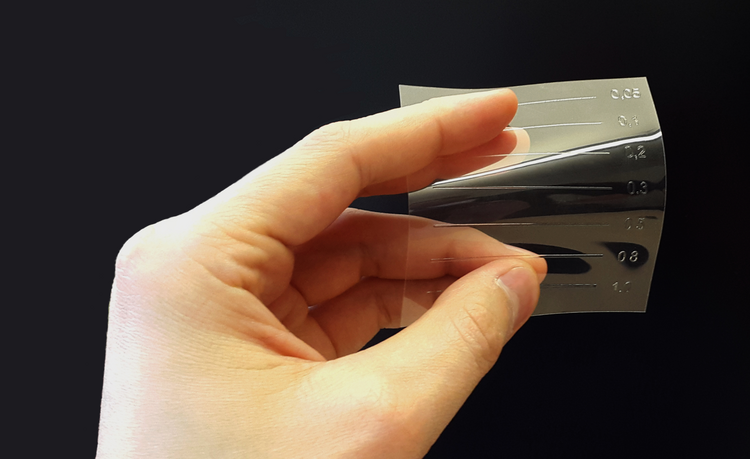TRR 123 PlanOS – B01 Offset and inkjet printing of multimode waveguides

| E-Mail: | tim.wolfer@ita.uni-hannover.de |
| Year: | 2013 |
| Date: | 31-12-17 |
| Funding: | DFG - Transregio 123 |
| Duration: | 01/2013 - 12/2017 |
| Is Finished: | yes |
| Further information | www.transregio123.de |
The research focus of sub-project B01 is on large-area application procedures for materials for the production of multimodal optical waveguides on film substrates.
The entire project area B is concerned with the manufacture of optical waveguides of different sizes. Sub-project B01 has the task of manufacturing relatively wide wave guide structures (approx. diameter of one hair). Wave guides with such a width can carry a great deal of light and therefore form the basis of the optronic system. Two techniques are used for the production: flexographic printing for large-scale foils and ink-jet printing for smaller sections. The ITA focuses on printing with flexographic printing.
The idea is that a large part of the optical structures is created with flexographic printing, which is then individually adapted using ink-jet printing. In this way, a combination of the strengths of both printing processes can be used.
Flexographic printing is a high-pressure process which is usually used for the printing of packaging. A printing plate that is clamped onto a cylinder works similarly to a stamp. The projecting structures, which were structured according to the desired print motif, are first moistened with paint. The subsequent rolling then leaves the desired coating with lacquer on the substrate. The possibility of manufacturing electronic circuits by means of printing has recently been examined. In this sub-project, flexographic printing is now used to also explore the realization of optical functions.
Flexographic printing provides the advantage that the process has a very large throughput (up to 15,000 sheets per hour) and thus very low cost per sheet can be realized. Furthermore, flexographic printing machines are also available all over the world in large quantities, so that a proven production process is industrially feasible.
A disadvantage compared to ink-jet printing is that structured printing plates are needed for the printing process. That means that the variability of the process is lower, as a new printing plate has to be made to change the printing motif. Furthermore, current processes do not yet provide the required resolution to realize the small structure widths of optical fiber.
Research is focusing on the realization of optical fibers, which have a low absorption and meet the requirements of the partner projects. For example, this can follow through a selection and adjustment of liquid polymers, which are cured with UV light. Also, the way in which high resolution and the desired cross-section shape of the optical fiber can be produced is being studied.
For more information please visit: www.transregio123.de.




















